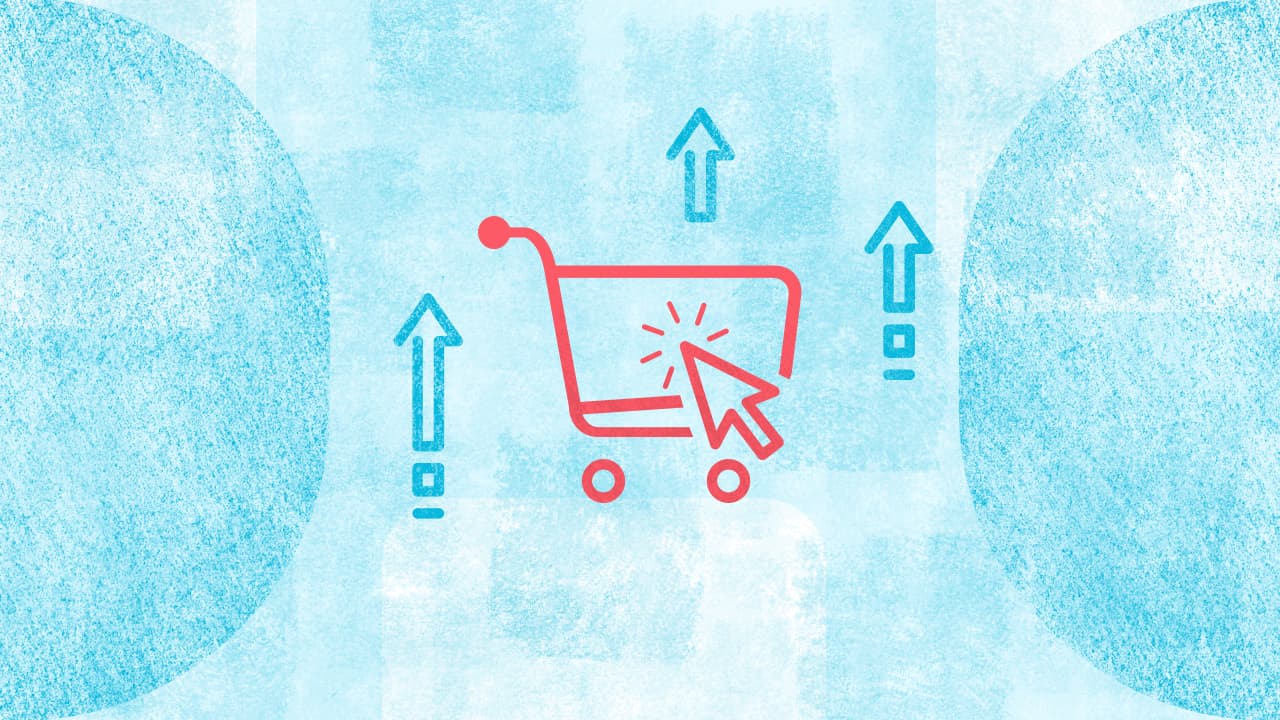With the tremendous rise in mobile traffic on the internet, there is one principle that is now ruling the trends. Desktop traffic goes out and looks for content, while
"The mobile traffic expects the content to be delivered to them."
The shift in this perspective of a massive piece of the audience has forced marketers and businesses to look for better ways to sell their products online. Social commerce was born out of such endeavors.
In this post, we'll understand social commerce in detail, check out the latest trends, and help you with some tips to get started today.
- What Is Social Commerce?
- Why Does Social Commerce Make Sense?
- Does Social Commerce Work?
- Top 3 Upcoming Trends For Social Commerce In 2020
- 6 Social Selling Tips You Can Use Today
Keep reading, or jump to a section of your choice.
What Is Social Commerce?
By definition, social commerce is a subset of e-commerce that involves social experience in shopping on the internet. But lately, social networks such as Facebook, Instagram, and more have changed the definition by bringing shopping experiences right where the audience socializes.
Hence, social commerce includes bringing the entire customer journey from discovery to the checkout onto a social network such as Facebook. Does it make sense? Does it work? We are here to answer all your questions.
Why Does Social Commerce Make Sense?
Understanding social commerce is simply common sense. Marketers have been using social networks for product discovery for a long time. In fact, this is how social networks make money by showing discovery ads.
A major flaw that is now apparent in this model of selling products online is that a typical e-commerce purchase journey has too many unnecessary steps & redirects in the conversion funnel.
More steps & redirects in the conversion funnel directly translate into potential points where customers might abandon the purchase and leave your store.
Social commerce provides a simple solution to this problem by streamlining the purchase journey from discovery to checkout and bringing it directly to a single screen where the user is most active and engaged.
Social commerce provides the ability to the customer to find products, read authentic reviews, share the product with their friends, make the buying decision, and checkout without ever leaving the social network.
Does Social Commerce Work?
Did you know that Facebook has plans to take advantage of social commerce to decrease the losses of up to $213 billion due to drops while checkout?
To get some perspective, let us look at some numbers about shopping on social:
-
Some 70% of shopping enthusiasts turn to Instagram for product discovery.
-
When compared to the average consumer, Generation Z spends spends 2-3 times more on shopping on social channels with Instagram and Snapchat taking the lead, while Generation X prefers shopping on Facebook.
-
Instagram holds the crown for the highest average order value of about $65 competing against Facebook, Twitter, and Pinterest.
To be on-point, "Yes, social selling works better than expected and might very well be the future of e-commerce."
Here are some of the best examples:
1. Facebook Messenger Integration
MIA Luggage integrated Facebook messenger to get close to the customer and reduce friction before checking out and achieved 81% lower cost per conversion.
2. Instagram Product Stories/Posts
Aritzia , a Canadian women's fashion brand has invested in shoppable Instagram stories and it has become their #1 revenue channel.
3. Shoppable Pinterest Pins
B&Q , a home improvement retailer increased its return on ad spend by 7X using an always-on shopping campaign strategy for shoppable pins.
Top 3 Upcoming Trends For Social Commerce In 2020
We hope all the information above has given you the right idea about social commerce. If you are curious about getting into the social selling scene, you must know the following trends in the business in order to make the most out of it.
1. In-App Checkouts
With Facebook and Instagram, both running partnerships with top brands such as Nike for customers to checkout and place orders without leaving the app, it is definite that the feature will soon roll-out to all the sellers.
Facebook, Instagram, and Pinterest support shops and product catalogs for quite a while now.
2. Advanced AI Chatbots
AI has now been developed enough to do the heavy lifting when it comes to customer support and sales queries. Although it can not yet replace human support completely, it is the future companies investing heavily in.
There are a number of services that are capable of being integrated into Facebook, or you can even create a messenger bot to welcome customers on your Facebook page or shop.
3. Augmented Reality
Apple is investing heavily in AR hardware for both the iPad and the iPhone, as well as the huge popularity of Snapchat and other AR-based apps signal to the fact that AR will be highly integrated into the shopping experience in the coming years.
Recently we have seen Taco Bell running a campaign with AR, where their filter on Snapchat was viewed 224 million times
Hence, these are the trends for social commerce to look out for. But if you are looking for some actionable insights and tips that you can use right now to start your social commerce venture, keep reading below.
6 Social Selling Tips You Can Use Today
Although there's no hard-fast rule for selling on social, here are a few easy to implement tips that'll help you get started in the right direction.
1. You Need To Sell On Facebook
If you sell products online and aren't taking advantage of Facebook as a selling platform in 2020, you're missing out on a huge opportunity.
There are two ways you can sell on Facebook in 2020.
-
Using Facebook's recently revamped launched shopping platform. You can create your own Facebook Store, list products, and set up a checkout within the platform itself.
-
If you're already running an e-commerce store on platforms such as Shopify or BigCommerce, you can easily integrate them with Facebook to sell products directly to your followers on Facebook.
You can check out our recently published detailed article on Everything you need to know about Facebook shop along with actionable insights on how you can integrate Shopify and BigCommmerce with a Facebook Store.
Here are a few of the benefits of selling on Facebook.
-
Low Marketing Cost: Compared to other marketing avenues, marketing on Facebook is more effective and budget-friendly
-
High Customer Engagement: Selling via your Facebook pages is the easiest and fastest way to engage with your target audience
-
Easily Monitor And Evaluate: Facebook makes it easy to check the stats on your impressions, clicks, and sales
2. Use The Power Of Instagram's Shopping Platform
Instagram has recently introduced a lot of new features that have laid the foundation for an Instagram Shopping Platform.
Brands on Instagram can tag products directly in stories & posts and lead customers directly to the item they want to purchase within the app.
After integrating your product catalog with your Instagram page, your followers would be able to purchase products directly from your page.
"130 million Instagrammers tap to reveal the product tags in shopping posts each month".
We recently wrote an article with detailed steps on how you can set up shop on your Instagram page, along with tips and tricks to sell more on Instagram.
3. Benefit From Influencers & User-Generated Content
One coherent advantage of selling on social is that it doesn't have to be in your face all time. There are multiple ways you can showcase your products to your followers on social without making it an obvious sales pitch.
Partnering with relevant influencers and highlighting user-generated content can be an effective way to give your followers a break from the traditional promo posts and allowing them to see what your products look in the day to day scenarios.
4. Run Targetted Campaigns
Since brands hardly get any organic reach on social, running targetted campaigns for your products on Facebook & Instagram is a good way to drive direct sales.
Being creative with your ads and using ad types such as Stories and Carousels can help peak user interest and also help you stand out from the competition.
However, it's quite important to measure the performance of your campaigns and fine-tune your strategies accordingly.
Statusbrew allows you to create & run advertisements on Facebook and gives you in-depth reporting of all your paid campaigns on Facebook & Instagram.
5. Leverage The Power Of User Comments & Feedback
Since user feedback has pretty much evolved from a "nice to have" add-on to an expected component of the online shopping experience, it's important to leverage reviews to drive more sales for your business.
" 89% of consumers consider comments & reviews to be an essential resource when making a purchase decision."
Comments on your product posts will essentially serve as the review section for your potential customers, so it's important to proactively manage the user comments.
If you struggle to manage comments on your posts or end up spending too much time doing it, using a comment management tool like Statusbrew eliminates all your challenges.
Here's how you can easily manage comments across social with Statusbrew.
6. Don't Make It All About Selling
Lastly, we'd like to point out that social isn't just about selling.
Given there are a few brands that solely post promotional content and are able to get away with it.
But if you're trying to grow your audience and just starting with selling on social, posting just promotional posts all the time can be counter-intuitive.
Brands these days are expected to show off their personalities on social, so it's important to put out content that resonates well with your brand and your audience.
Using a social media management tool like Statusbrew, you can put together a Social Media Content Calendar that will ensure a healthy mix of content goes out.
How Are You Selling On Social?
The tips mentioned above can provide much-needed motivation and inspiration to start selling on the social. But since there is no sure-shot way to become a master at selling on social right away, we want to hear from you.
Let us know your own experiences with selling on social in the comment section below. We'd love to hear out any success stories or struggles.
Also, you can also try out Statusbrew free for 7 days to see if it's a fit for your business.
Statusbrew is an all in one social media management tool that supports Facebook, Instagram, Twitter, Linkedin, YouTube, and even Google My Business.




Explore the Statusbrew range of social media tools
Cancel anytime!